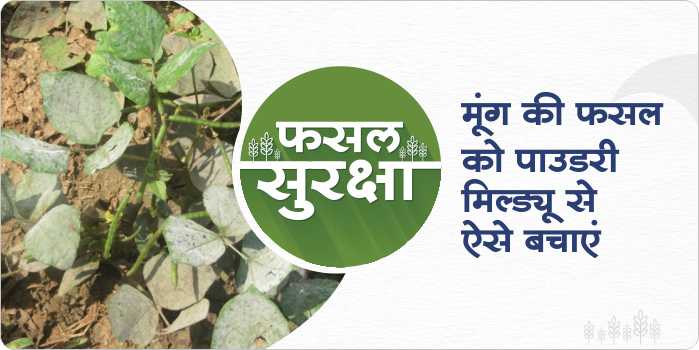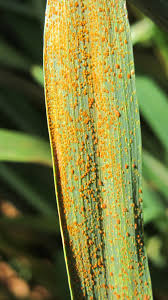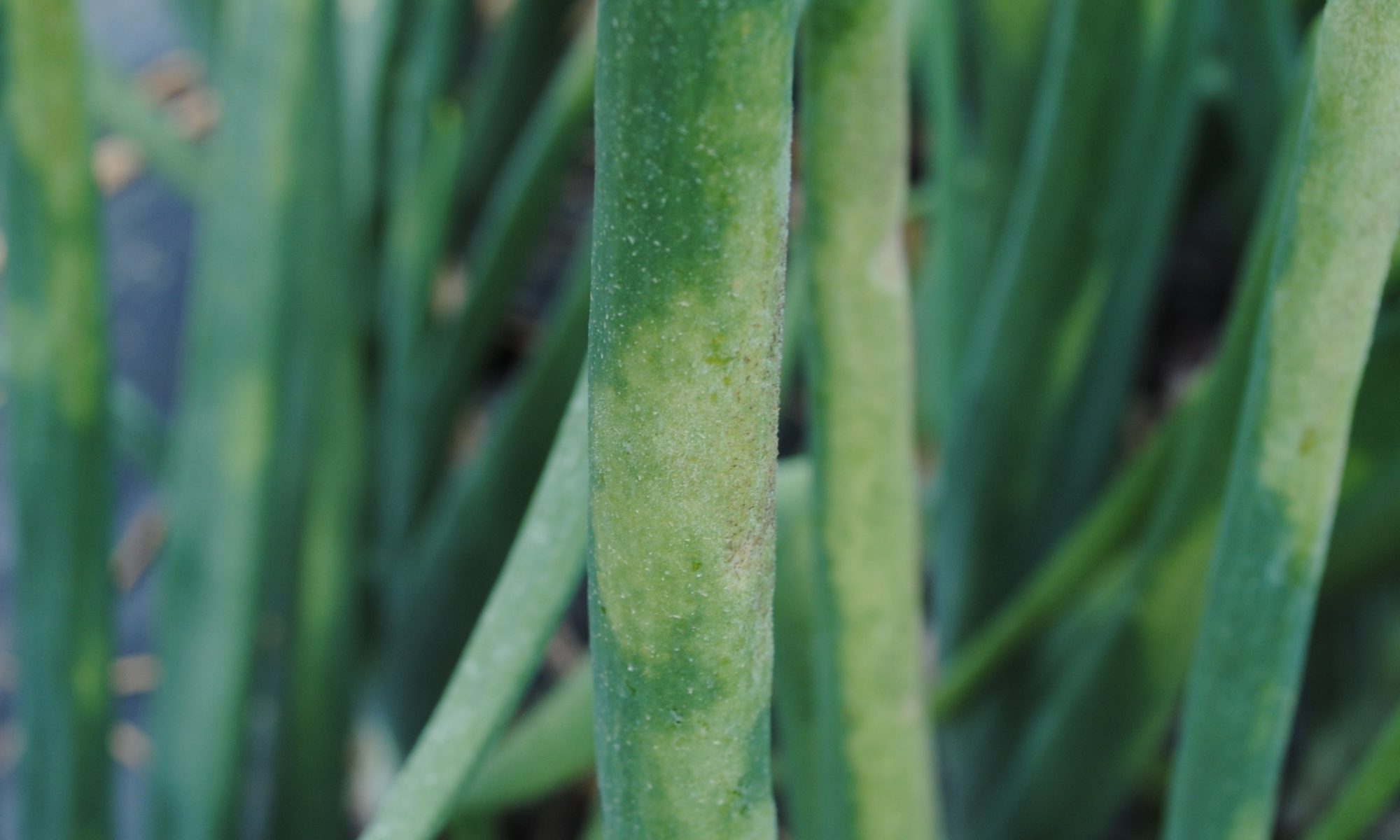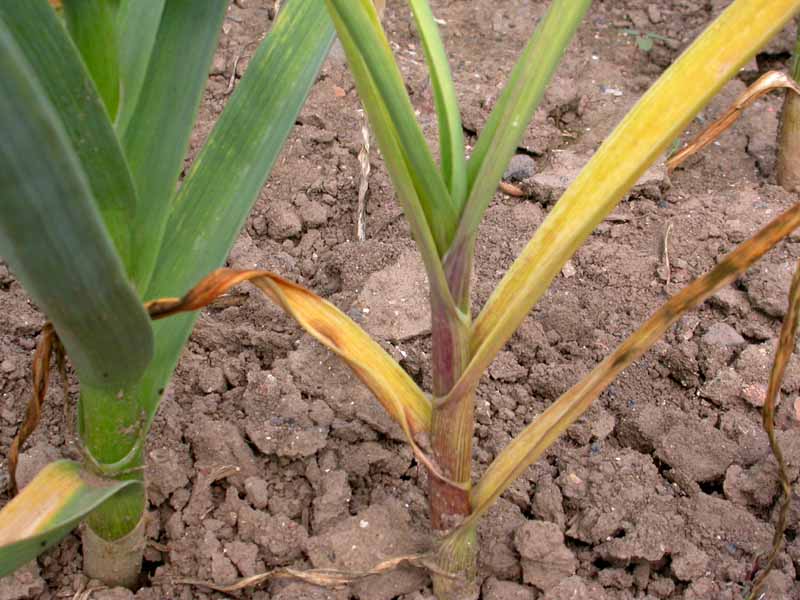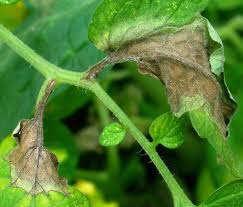- Usually this disease affects the leaves of the green gram crop, invading the lower and upper part of the leaves.
- Yellow to white powder appears on the upper and lower surface of the leaves of green gram.
- For managing them use, Azoxystrobin 11% + tebuconazole 18.3% SC @ 300 ml /acre or Azoxystrobin @ 300 ml/acre
- Spray: Trichoderma viride @ 500 gram/acre + Pseudomonas fluorescens @ 250 gram/acre as a biological treatment
Pest attacks may occur in the change of weather
- Due to the change in the weather, many types of pests can attack crops because the moist environment condition is suitable for it.
- There is a possibility of attack of Red Beetle insect in Summer Cucurbits vegetables, if the large number of this insect then spraying of Cypermethrin 4% EC + Profenophos 40% EC 400 ml or Bifenthrin 10% EC 200 ml or Dichlorovos 76 EC 300 ml / acre.
- Spraying Thiamethoxam 25 WG 5 gm/ 15 liters of water in the okra to control the sucking insect such as white fly, aphid, jassid etc.
- There is a high possibility of Thrips in Onion crop so spraying Profenophos 50 EC @ 45 ml or Lambda cyhalothrin 4.9% CS @ 20 ml or Spinosed @ 10 ml or Fipronil 5 SC @ 15 liters water per acre.
- Use 0.5 ml mixture with insecticide in 15 liters of water, so that the insecticide is absorbed by the plants properly.
Management of Rust disease in Wheat
-
- Leaf rust is caused by the fungus.
- The first signs of the disease (sporulation) occur 10-14 days after infection
- Leaf rust produces reddish-orange coloured spores which occur in small, 1.5 mm, circular to oval-shaped pustules.
- These are found on the top surface of the leaves, distinguishing leaf rust from stem rust which is found on both surfaces of the leaf.
- The spores require 15 to 20ºC temperature and free moisture (dew/rain/irrigation) on the leaves to successfully infect wheat.
Management-
- Crop rotation is very important.
- Growing resistant varieties is an economical and environmentally friendly way of disease reduction.
- During the growing season, active crop monitoring is very important for an early detection of diseases.
- Avoid repeated use of fungicides with the same active ingredient.
- Spray Kasugamycin 5% + Copper Oxychloride 45% WP 320 gm/acre or Propiconazole 25% EC 240 ml/acre.
Like and share with other farmers by clicking on button below
ShareManagement of Early Blight in Potato
Management of early blight in Potato:-
- Diseased plant parts should be destroyed properly, Avoid irrigation in cool cloudy weather and time irrigation to allow plants time to dry before nightfall.
- Maintain good soil fertility and crop vigor, Harvest when skin is mature to avoid bruising and in turn infection of tubers.
- Spray 2 gm Mancozeb 75 WP + 10 gm urea per litre of water at 15 days interval when symptoms start or Carbendazim 12%+ Mancozeb 63% WP @ 50 Gm/15 litre water or Copper oxychloride 50% WP@ 50 Gm/ 15 litre water.
Like and share with other farmers by clicking on button below.
ShareManagement of Downy Mildew in Onions
Management of Downy Mildew in Onions:-
Symptoms:-
- Violet colour fungus on the surface of leaves or flower stalk, which later becomes pale greenish yellow colour.
- Finally, the leaves or seed stalks collapses.
- The disease is worst in damp condition, late planting and application of higher doses of fertilizer and numerous irrigation.
Control
- Onion bulb used for seed crop should be exposed to sunlight for 12 days to destroy the fungus.
- Spray with Mancozeb + Metalxyl or Carbendazim + Mancozeb @ 400 Gm/Acre at fort night interval.
Like and share with other farmers by clicking on button below
ShareManagement of Fusarium basal rot/basal rot
- Tricoderma @ 6 Kg/acre
- Carbendezim + mancozeb ( Saaf/Turf ) @ 1kg/acre or
- Kitazine @ 1 ltr/acre. or
- Conika (Kasugamycin 5% + Copper Oxychloride 45% ) WP @ 300 gm/acre. or
- Trigger Pro (Hexaconazole 5% SC) @ 400 ML/acre + Streptocycline (Streptomycin Sulphate IP90%W/W+Tetracycline Hydrochloride IP 10%W/W) @ 12 gm/acre
Fusarium rot/basal rot in garlic
- Initially yellowing of leaves and stunted growth of the plant is observed, which later on dry from tip to downwards.
- In the early stage of infection, the roots of the plants become pink in colour and rotting take place later. In the advanced stage, the bulb starts decaying from lower ends and ultimately the whole plant dies.
- Survival and spread:- Pathogen survives in soil and garlic bulb as a primary source of inoculum in the form of Chlamydospore, resting spore) for many years.
- Favourable conditions:- Moist soil and 27 °C temperature favours the development of disease.
Control of Fusarium Wilt in Gram
Control of Fusarium Wilt in Gram:- Wilt in chickpea (Gram) caused by Fusarium oxysporum fungi. Warm and humid environment is favourable for it. the prevention of the disease, the following precautions have to be taken.
- Conserved soil moisture during Monsoon.
- Level up after deep ploughing (6-7 inch).
- Use disease-free seed.
- Follow 6-year crop rotations.
- Grow resistant varieties.
- Seed treatment with Carboxin 37.%+ Thiram 37.5% @ 2 gm /kg or Trichoderma viride @ 5 gm/kg.
- Avoid sowing when temperature are high. Sown in second and third week of October.
- Irrigation in November-December.
- Apply Mycorrhiza @ 4 kg/acre at 15 days after sowing.
- Spraying Thiaphanate methyl 75% WP @ 300 gm/acre at before flowering.
- Spraying Propiconazole 25% EC @ 125 ml/acre at pod formation stage.
Like and share with other farmers by clicking on button below
ShareControl of late blight of tomato
- Destroy all tomato debris after harvest.
- avoid water logging condition on the farm.
- Spare any one fungicide for disease control.
- Metalaxyl 8%+Mancozeb 64% @ 500 gm/acre.
- Kasugamycin 5% + Copper Oxychloride 45% WP @ 300 gm/acre.
- Pyraclostrobin 5% + Metiram 55% @ 600 gm /acre.
- Dimethomorph 50% WP @ 400 gm/acre.
Like and share with other farmers by clicking on button below
ShareLate blight of tomato
- first appears of Late blight on the lower, older leaves as water-soaked, grey-green spots.
- As the disease matures, these spots darken and a white fungal growth forms on the undersides. Eventually, the entire plant will become infected.
- Crops can be severely damaged.
- The disease spreads quickly in fields and can result in total crop failure if untreated
Like and share with other farmers by clicking on button below
Share
